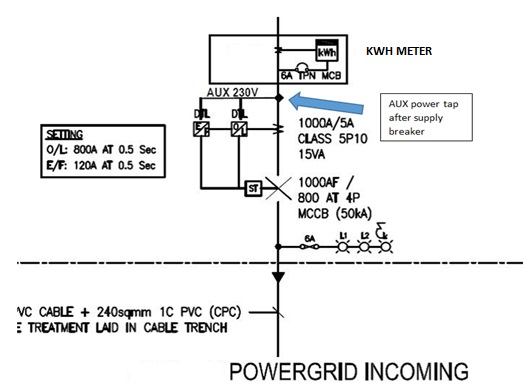Protection Relay Installation Best Practise
Method to overcome Temporary Over Voltage damage
The usage of electrical relays to protect human lives and equipment from electrical faults is a mainstream practice, which is essential but often overlooked. The installation design and product choice are essential to creating an effective system that will perform without creating incidental problems.
This recent case involves the malfunction of an installed batch of protection relays at one of the largest resort and theme park in Singapore. The protection relays were installed since 2010. The relays formed part of a system design that protects the resorts’ electrical operation. However, this electrical system was plagued with a series of unverifiable electrical tripping. Over time, some of the protection relays completely failed to operate. Investigation revealed signs of electrical burnt marks on the relays.
Electrical consultant JM Pang was engaged by the owner to solve the on-going problem. One of the findings was the electrical trip events were without cause, or nuisance tripping. At the same time, the affected protection relays were powered by an auxiliary power tapped onto the incoming, before the breaker. This practice could have been one cause of the relay’s failure.
Energization of large power transformer is known to create Temporary Over Voltage condition. Such condition can last a few seconds in duration. In normal practice, the downstream circuits will be put to off position when a large power transformer is energized and protect downstream equipment from the Temporary Over Voltage stress condition. However, these stress will be exposed to relays that are tapping power before the circuit breakers. Causing the relay to fail prematurely.
JM Pang recommended a complete replacement of the installed relays with MH Protection Relays. Mun Hean Singapore was engaged for this replacement exercise. The replacement exercise will be carried out in phases, with the 1st phase involving a mass replacement for critical MSBs and SSBs with 186 pcs of MH Protection Relay REA200n and about 30pcs of EF18. The second phase will be completed by 1st quarter of 2018.

Fig 1. Best Practise for Protection relay installed after the Supply Breaker
The MH Protection Relay was designed with the consideration of a “power-free” indication
and latched reset function called MTB. The designer understood the challenge of TOV
condition and needed a solution for a protection relay to provide operating status indication
without continuous power supply. The design of MTB was invented to solve this problem
and has remained to be the leading choice of power network protection in many parts of Asia.
MH Protection Relay with MTB are designed to be installed with power tapping after the
circuit breaker and circumvent the TOV condition challenge.

